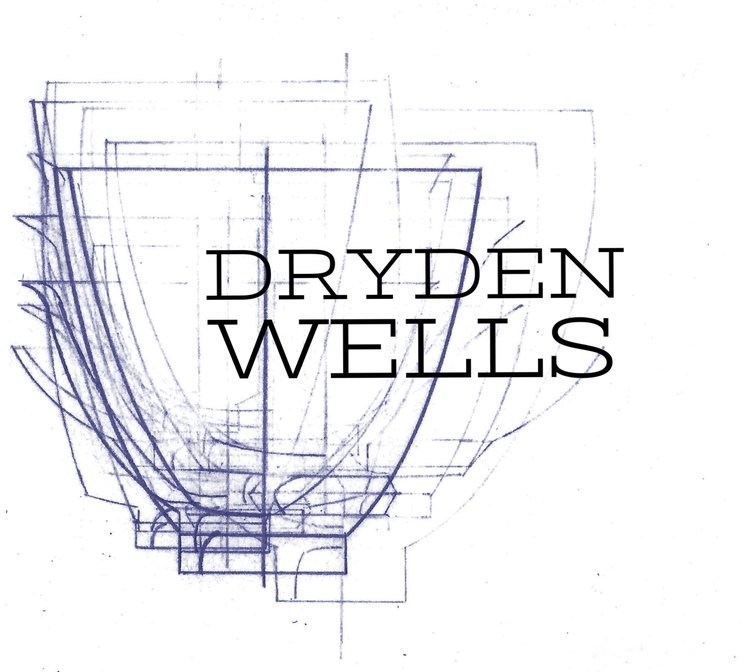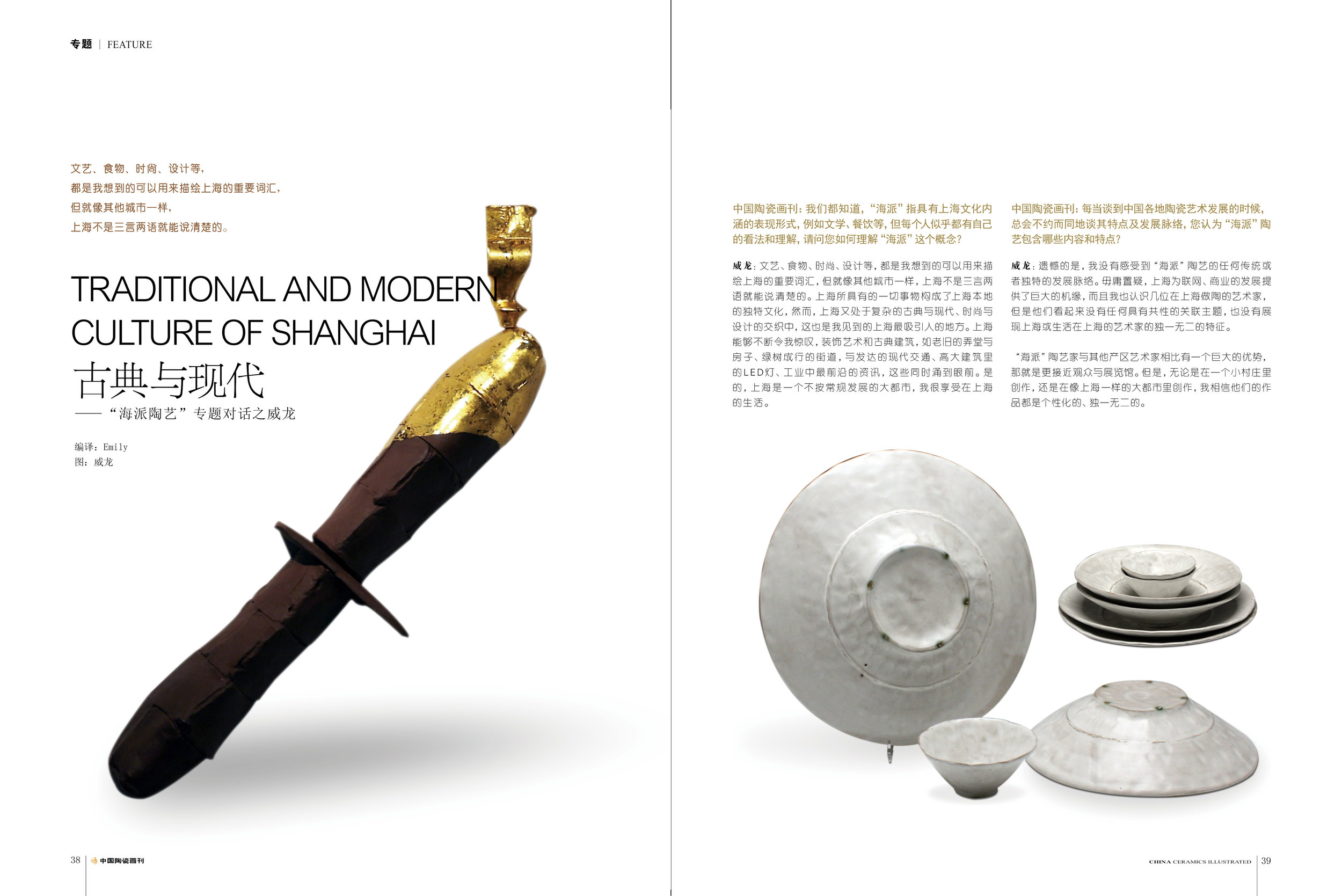In 2015, along with several other local ceramic artists, I was interviewed by Shanghai Culture Magazine in regards to my understanding and response to "Shanghainese Ceramics." Unfortunately, I do not have the English translation of each question, but I have included my responses for the article below. I translated the questions I was given online with Bing Translator. Be sure to click on the images below to see a larger version.
“海派陶艺”专题采访提纲 / "Shanghai style pottery" - Interview Outline
中国现代文学馆副馆长吴福辉认为,“海派文学”应具有四个条件:第一,应当最多地“转运”新的外来的文化;第二,迎合读书市场,是现代商业文化的产物;第三,站在现代都市工业文明的立场上来看待中国的现实生活与文化;第四,是新文学,而非充满遗老遗少气味的旧文学。文学如此,陶艺又是怎样的呢?
1、我们都知道,“海派”指具有上海文化内涵的表现形式,例如文学、餐饮等等,但每个人似乎都有自己的看法和理解,请问您如何理解“海派”这个概念?/ As we all know, "Shanghai" refers to the expression of the cultural connotations of Shanghainese, such as literature, catering and so on, but everyone seems to have their own views and understanding, how do you understand the concept of "Shanghai"?
Literature, food, fashion, design, etc. are all important words I would use when describing Shanghai, but like any city, it is much more than can be described with words. There is a culture in Shanghai unique unto itself that is made up of all these things; however, it is the juxtaposition between a sophisticated, classical city and an epicenter of modernity, design and fashion that I find to be most intriguing about Shanghai. I continue to be amazed by the ways that the city has intertwined the abundance of art deco architecture and classical buildings, the old lane houses , and tree lined streets, with the new technologies in mass transit, massive LED lit buildings, and the newest fashions in the industries. And while yes, Shanghai is a sprawling metropolis, there are many times that I find myself enjoying the
2、每当谈到中国各地陶瓷艺术发展的时候,总会不约而同地谈其特点及发展脉络,您认为“海派”陶艺包含哪些内容和特点?/ Whenever we talk about the development of ceramic art in China, we always talk about its characteristics and development, what content and characteristics do you think "Shanghai" pottery contains?
Unfortunately, I am unaware of any traditions or developments of "Shanghai Pottery." It has been a great place to work for the network and business opportunities it presents, and yes, I do know several Ceramic artists working in Shanghai, but there does not seem to be any connecting theme and or characteristic unique to Shanghai and or the artists working in it. Shanghai Ceramic Artists do have a major advantage over artists working in other areas, and that is one of proximity in regards to audiences and places to exhibit. Bu,t whether working in a small village or in a major city like Shanghai, I believe that the artists working in Shanghai, like the artists working in the small village, create work that is personal and unique to them.
3、“海派陶艺”与景德镇、宜兴、龙泉、德化等传统陶瓷产区的最大区别在哪?上海具有哪些明显的优势,不足又在哪里?/ What is the biggest difference between "Shanghai style pottery" and Jingdezhen, Yixing, Longquan, Dehua and other traditional ceramic producing areas? What are the obvious advantages of Shanghai, and where is the shortage?
Again, I am unaware of any traditions or developments unique to "Shanghai Pottery." To try and compare it to the cities / traditions identified (i.e. Jingdezhen, Yixing, Longquan, Dehua) is an absurd notion. So, I suppose the both the strength and weakness of "Shanghai Pottery" would be that there is no identifiable tradition.
4、“海派”诞生于上海这个大都市,融汇了中外各门类的文化元素,例如上海本土的石库门文化、外滩租界的西方建筑文化等,您认为这些文化元素对海派陶艺的创作有哪些影响?"Shanghai" was born in Shanghai, the metropolis, a combination of Chinese and foreign cultural elements of various categories, such as the local stone library culture in Shanghai, Waitan concession of the western architectural culture, etc., what impact do you think these cultural elements have had or have on the creation of Shanghai pottery?
I think the above are all important parts of what make Shanghai, "Shanghai." I also believe it would be difficult for any artist working here to avoid the elements of what make up Shanghai, I suppose to live here and do so would be impossible. Having the mix of East and West does create an interesting dynamic that I imagine is just as influential to the Chinese Ceramic artists living and working here as it is to be, a foreigner living in Shanghai.
5、在您的陶瓷艺术创作中,上海这些文化现象和“海派”艺术家中,哪些对您影响最大?/ In your ceramic art creation, what Shanghai cultural phenomena and "Shanghai" artists have had the most effect on you?
By far, the thing or idea that has impacted me most, is simply, the appreciation for the daily object. Perhaps the most convenient way to observe this value system can be done when drinking tea with others. It is during this that I feel people tend to slow down and observe and appreciate the subtleties of not only the tea itself, but also the tools used to serve it and the environment in which they sit. These experiences have caused me to also slow down and rethink the importance of the objects used in daily life. As I continue to develop and make new works in Shanghai, I believe I have tried to simplify the objects. Color, form, pattern, etc. are all parts of the process and finished piece that I continue to make an effort to simplify. I believe part of the reason for this is because of the continued contemplation of the daily object and the conversations I have with other artists here, but also perhaps in response to the sensory overload that is Shanghai.
6、同其他艺术门类一样,陶瓷始终是处在传承与创新的过程之中。您认为,“海派陶艺”继承的是什么样的文化传统?又是如何将这些地域文化融入创新之中?/ Like other art categories, ceramics is always in the process of inheritance and innovation. In your opinion, what kind of cultural tradition has "Shanghai style pottery" inherited? How can these regional cultures be integrated into innovation?
Like a lot of industries in Shanghai, the ceramics being made here is a synthesis of traditional and modern. However, in regards to process and materials, many clay artists in Shanghai have either experience working in and or an understanding of the traditional techniques and materials used in the cities such as Jingdezhen, Yixing, Longquan and Dehua. With this knowledge and experience, these same artists can apply it to the creation of their ideas. It is important to understand that while the artist's ideas do most certainly inform their materials and process, the materials and process definitely reciprocate in how they influence and inform the artist's ideas.
7、您对当代海派陶瓷艺术有什么样的期待?同时希望通过哪些方式来促进海派陶瓷艺术的发展?/ What kind of expectation do you have for contemporary Shanghai ceramic art? At the same time, hope that through which ways do you hope to promote the development of Shanghai's ceramic art?
I would like to see more growth in the Shanghai ceramic arts community: more exhibitions, more shared studios, more lectures and workshops, visiting artist's, etc. For being one of the largest, fastest cities in the world, it's clay community is not particularly large and or cohesive. I believe the potential for the ceramic arts in Shanghai is vast and I would like to see it's continued development. Increased involvement in any of the above areas would only help nurture the community.



